Are you are you feeling like your spice cabinet out of control? Do you have bottles, zip bags and boxes of spices haphazardly strewn inside your cabinet space?
Lots of folks only clean out their spice cabinet when moving, or when they run out of room.
If you didn’t know this already, spices don’t last forever. Since they’re usually one of the more expensive pantry items, it’s really worth taking the time to inventory what you have to be sure you use them before they’re bad.
Here’s how to do it! Use this guide on how to take stock of what you have, figure out what to keep or throw out, and how to put your spice cabinet back together.
Throw Out the Old Spices
Unlike fresh food, spices don’t actually spoil or go bad. What does happen, though, is that they lose flavor and potency over time. Old spices won’t season your dishes in the same way and can add disagreeable, flat flavors.
Dependent on the type of spice and what form it is in, shelf lives do differ:
Ground Spices – 1 year
Whole Spices – 1-2 years
Dried, Leafy Herbs – 6 mos. to 1-year tops
If you are unsure of how long you’ve had the spices, and can’t find an expiration date, use your senses. Ask yourself, does the spice in question still have a strong scent? Does it have the beautiful deep color that it once did? Grab a pinch, does the fragrance of scent come up when you rub it between your fingers? If the answers are no, then it’s time to dump and replace it!
Clean and Reuse
Once you’ve tossed out the old spices, you may want to keep the bottles — I sometimes reuse them for homemade spice blends, dried orange, lime or lemon peels or keeping thumb tacks, screws, buttons or other tiny household items. Just make sure the cleaned bottles are totally dry before reusing
Consolidate
If you have more than one of the same spice that’s already open, merge them together to save space.
Expiring Soon
Take a dive in to check those expiration dates moving the ones that are just about finished or expiring to the front. From here on out, when you bring new spices home, grab a permanent marker and note the expiration date , big and bold where you can’t miss it.
Where to Store your Spices
Resist the urge to store your spices near your stove, atop the oven or on your window sill. Your spices will hold up much longer when stored in airtight containers, away from heat and light. My favorite place to store spices is in a cabinet or drawer within reach of my prep area.
Your Spice Staples
There are several spices I always have on hand. These are the ones that are often in recipes.
I would be remiss if I didn’t mention My Sage Gourmet’s collection of Artisan blends. Most of the seasoning ingredients that makeup our blends, come from my own garden. I grow, harvest and hand- blend each of my tried and true combinations with a few locally unobtainable exceptions. My Sage Gourmet blends are here to help you create unique, delicious healthy, easily. Dishes with ease.
I love to cook-a lot which means I am always cooking up new blends based on mine and my clients tastes and experimentation-It is so exciting to create something bold and new.
Beyond My Sage Gourmet blends, these are the spices I have on hand much all the time:
Cumin – Buy it in seed or powder form. It is a typical ingredient in many spice blends, such as curry powder. Cumin is a staple spice in many cuisines, especially Mexican, Indian, African, and Asian.
Bay Leaves are best whole and dried and can be ground down easily. They may seem like a spice that is easy to forget about, but they are a silent, nuanced enhancer of yumminess. My two favorite ways to use are roasted whole chicken and soups.
Black Peppercorns – Fresh is Best. I like these best when purchased whole. Invest in a pepper grinder!
Cinnamon-baking for sure but also instead spicy dishes, like a cinnamon-lemon chicken.
Coriander Seed is a whole spice or ground make an excellent addition to beef goulash, curry, fish and grains. Adds just a little sweetness to food.
Red Pepper Flakes are a must have for any spice rack, as they heat up sauces, add an extra pop to pizza, and taste delish in many types of stews and soups.
Smoked Paprika (Sweet) is another essential, as the depth of its flavor does a lot for everything it is added to. Generally, when a recipe calls for Paprika, Sweet is what they are referring. Sprinkle on deviled eggs, chicken or pork for starters. I found this great recipe by Jamie Oliver.
Nutmeg works like magic for many vegetables and tastes wonderful in savory foods, like grains, pork and even eggs. I add a bit to my whole grain pancakes along with orange peel for extra flair. I prefer shaving from the whole nut using a fine metal cheese grater.
Basil is another herb that makes itself known in Italian cuisine, though it does also come up in French cooking as well. I keep a jar on hand at all times. Super easy to grow but since the summer heat causes it to bolt too fast. I just can’t grow it year-round.
Rosemary is unlike most other spices because it doesn’t lose much flavor as it cooks. This is a spice that is unique in its ability to be added to a dish early on.
Cayenne Pepper is excellent for Cajun or Southern United States inspired dishes. Cayenne pepper gives a nice spiciness to many dishes.
Ground Cloves are excellent with meats and add a lot to holiday baking. They are also delicious with fruit and in marinades.
Turmeric is found in a lot of different curry powders and gives a nice yellow glow to many foods. TA hot trend right now due to all the health benefits.
Cardamom Powder intensifies both savory and sweet flavors. It is light and floral with notes of citrus.
Allspice Powder was historically used to preserve and flavor meat. It is warm while also maintaining a slight pungency.
Ginger Root Powder is present in a lot of Asian cuisines. It gives a distinct heat and flavor to every dish.
Sage is popular in England and in Greece. This herb is mostly popular in America for stuffing during the holidays, but we think it is an essential spice because it does so much for fatty meats. It tastes excellent with things like veal or lamb.
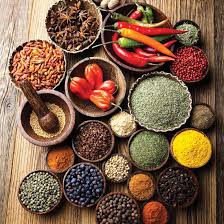
Of course, a spice list aimed at helping someone get their spices in order wouldn’t be complete without My Sage Gourmet’s spice blends.
Savory Spring blend combines just the right amount of savory to show off any spring recipe. We cannot do without it. Delicious on beef, chicken, pork, fish or grilled vegetables. Mix it into a dipping sauce or dressing or add to your favorite grain.
Summer Garden Blend- Classic summer flavor anytime. Best on veggies, fish, poultry and pork.
Get the summer feels at any time of the year!
Oven Roasted Garlic- Come on, need I say more! Our most popular blend. It is our famously tried and true blend. We add it to many dishes for that savory, familiar taste but without the bulk that garlic cloves add to a dish. Garlic mashed potatoes-Hello!
Tuscan Herb Rub- Try it on boneless, skinless chicken, salmon steaks, lamb or in your next marinara sauce.
Herbs and Coffee Rub-This aromatic and versatile blend can be used as a cooking ingredient, a classic rub or for additional seasoning at the table.
Chili Lime Rub – This spicy salt blend adds a zesty kick to your favorite dishes. An essential addition to any pantry. Delicious on chicken, pork, fish or grilled vegetables. Great with guacamole, or add a pinch to your salad dressing for that wow factor.
Herbs De Provence Sea Salt- Celebrating the signature flavors of France, this aromatic seasoning is an essential addition to any pantry. Our versatile blend can be used as an ingredient in cooking, or to season foods at the table.
Maple Seasoned Black Pepper– The perfect seasoning for any kind of meat, poultry or fish. A delicious addition to egg dishes, soups or stews. Try it on butternut squash, sweet potatoes or asparagus.
Southwest Seasoning– A delicious addition to any shrimp, fish, pork or poultry dish. Use it to spice up your tacos, quesadillas or Spanish rice. Or add a pinch to your eggs, soups or stews. We like to rub it into our chicken before it hits the grill.

Summer Sale Happening Now!
20% off our most sought after seasoning blends!
Plus Free Shipping on all orders over 50.00!
Use coupon code MYSAGESUMMER at check out
Hurry ends August 30!
Now that you know what you have in your spice drawer and where everything is, it’s time to get cooking! If there’s a certain blend of spices that you make often, save some time by making a big batch so you don’t have to measure out multiple spices each time. If you feel like you should use spices more often, keep small bowls of your favorites out on the counter as reminders.
Do you have any spice storage tips to share?
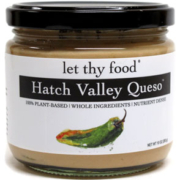 Let Thy Food Hatch Valley Queso
Let Thy Food Hatch Valley Queso 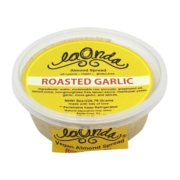 La Onda Almond Dip & Spread Roasted Garlic
La Onda Almond Dip & Spread Roasted Garlic 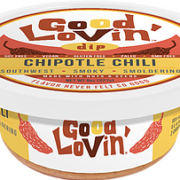 Good Lovin’ Dip Chipotle Chili
Good Lovin’ Dip Chipotle Chili 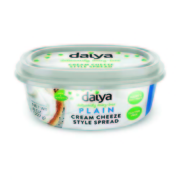 Daiya Strawberry Cream Cheeze Style Spread
Daiya Strawberry Cream Cheeze Style Spread
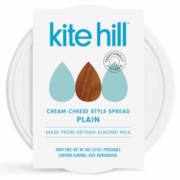




 Getting diagnosed with a gluten sensitivity
Getting diagnosed with a gluten sensitivity




